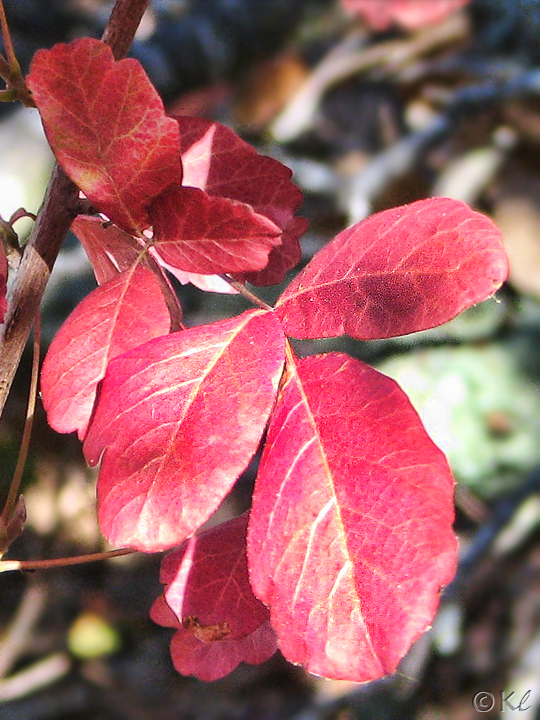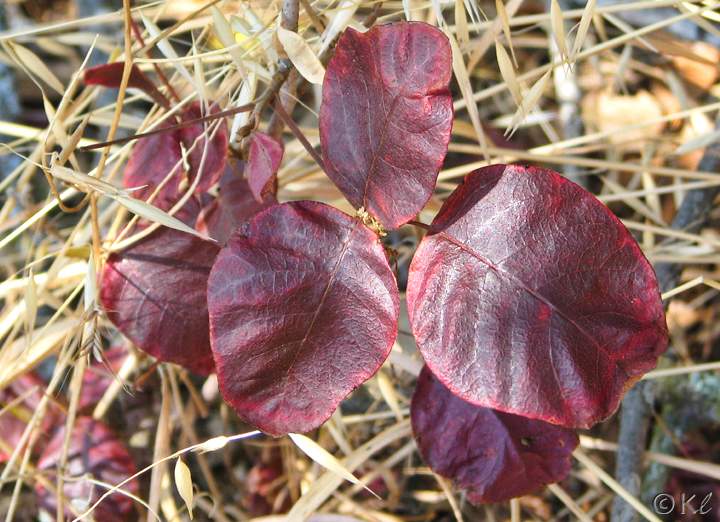
Pacific Poison Oak
Toxicodendron diversilobum
Toxicodendron diversilobum





|
Poison oak is found all over Rockville Hills Regional Park, and it is the #1 plant that visitors ought to be able to ID--and avoid. Venturing off-trail in many areas of the park will almost certainly expose you to it. Poison oak can look like bushes, trees, and vines, and it can be very appealing when flowering, turning beautiful reds, or full of berries. So you need to rely on more than just a 'leaves of three' mantra. I can attest that the rash an exposure brings is itchy and unpleasant at best, and may even require medical treatment.

| Photos 1 through 14 show some of the different 'looks' of Pacific Poison Oak. |

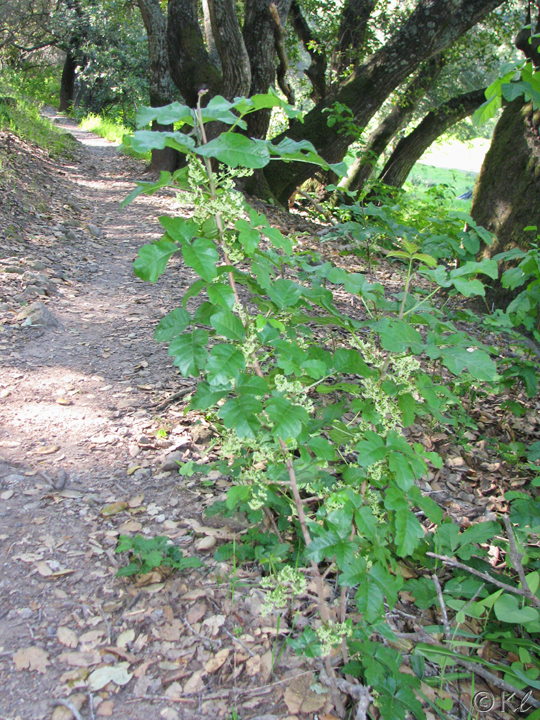



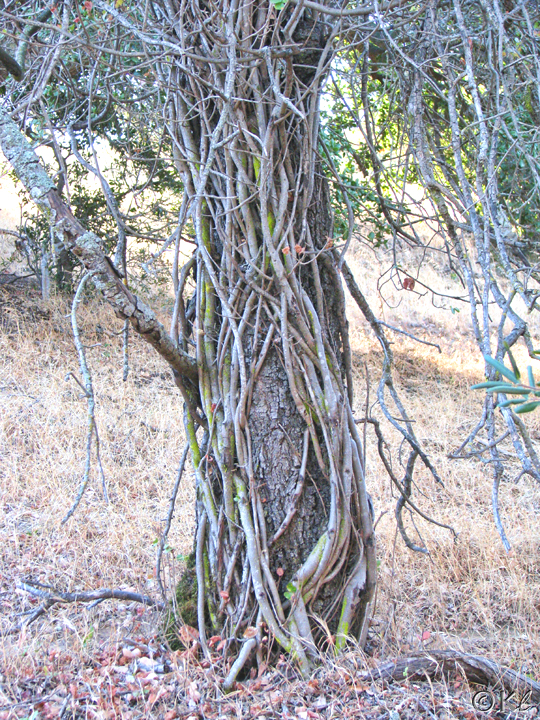

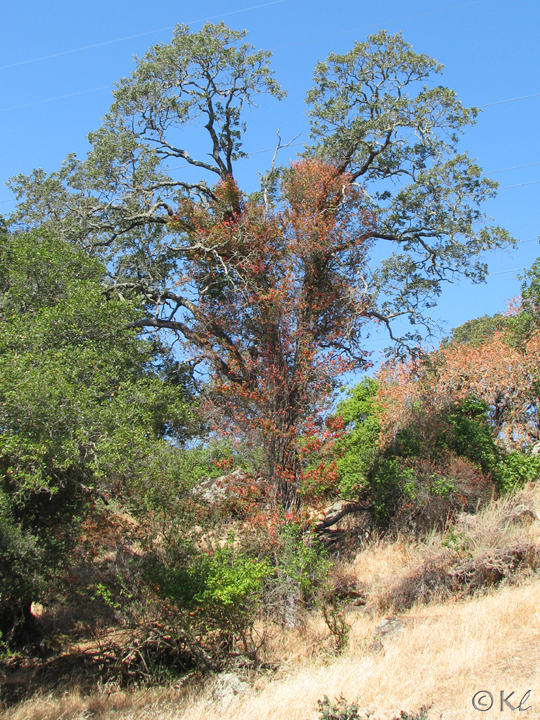
| The red leaves make the Pacific Poison Oak more obvious in the oak tree. |
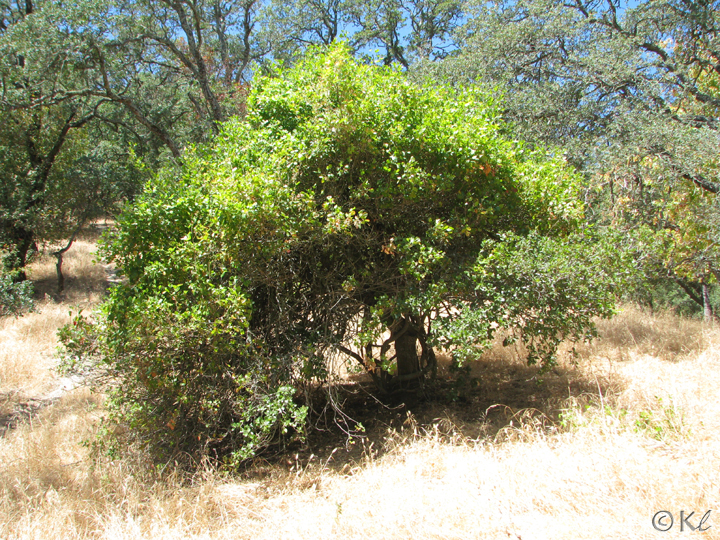
| The top of this tree (probably oak) has a layer of Pacific Poison Oak. |
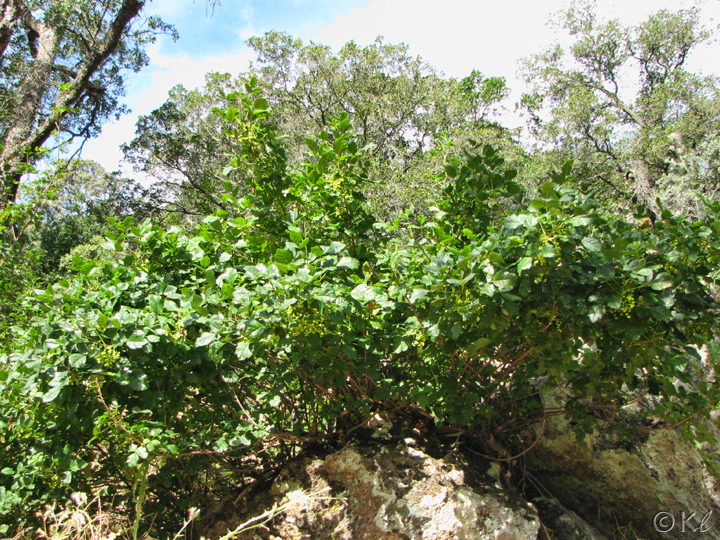
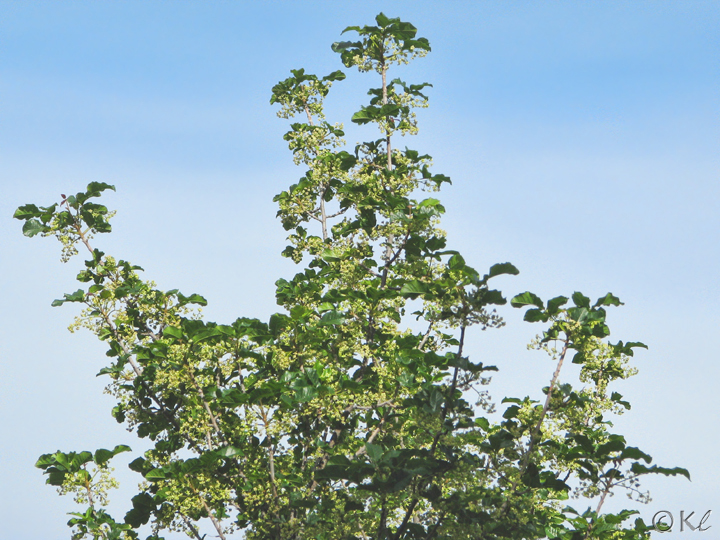

| Almost looks like a perfect little tree for landscaping! |

| Twins! |


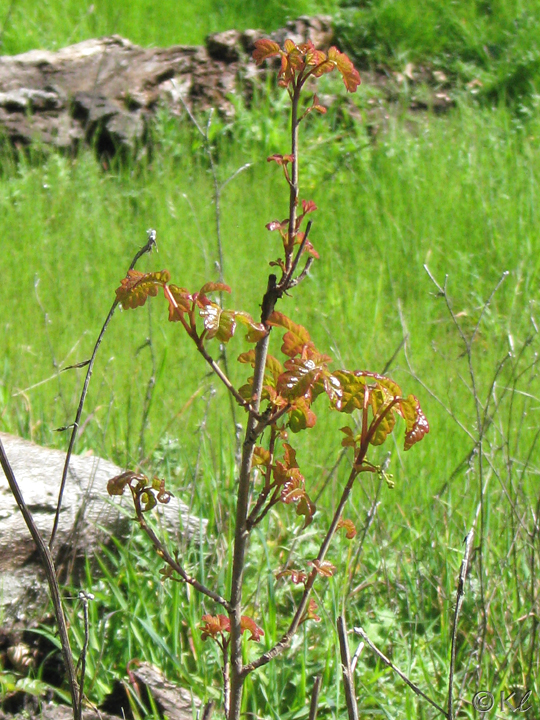


| Even when the "leaves of three" is obvious, the leaves' appearance can very widely. These leaves are probably about 2.5 inches long and shiny. |
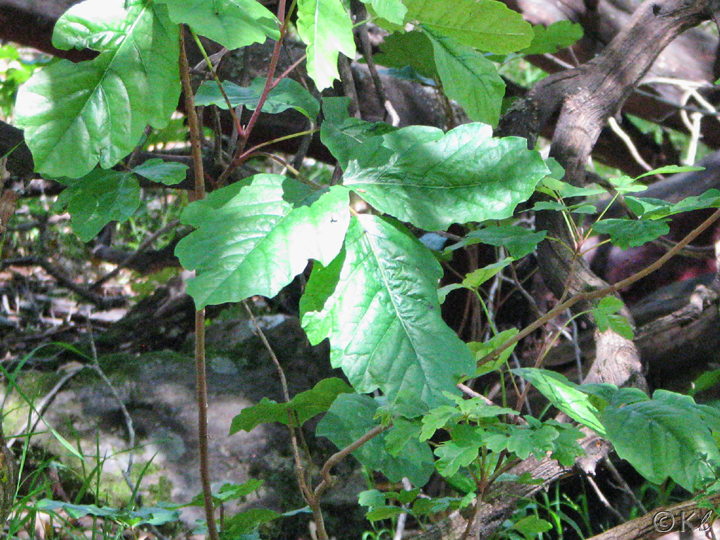
| The leaf size on Poison Oak varies quite a bit. The leaves on this plant are at least six inches long, which is much larger than average. |

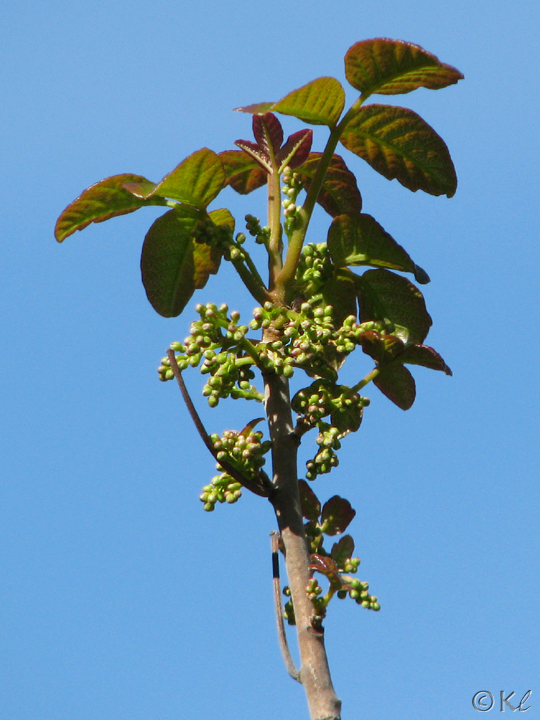

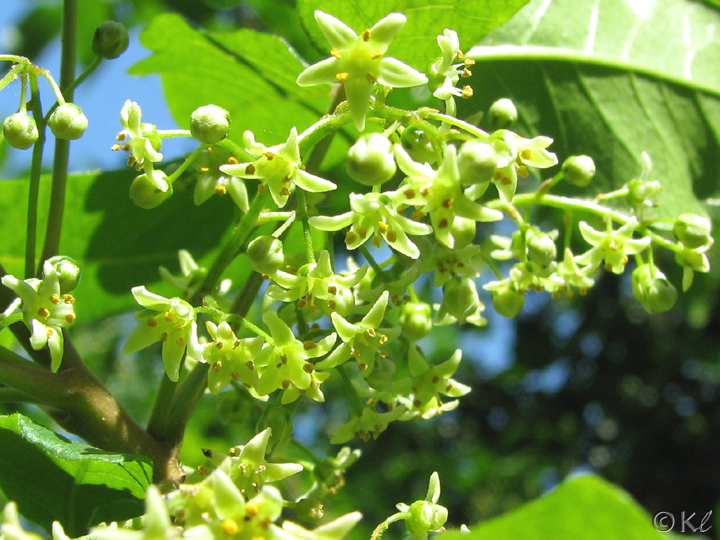
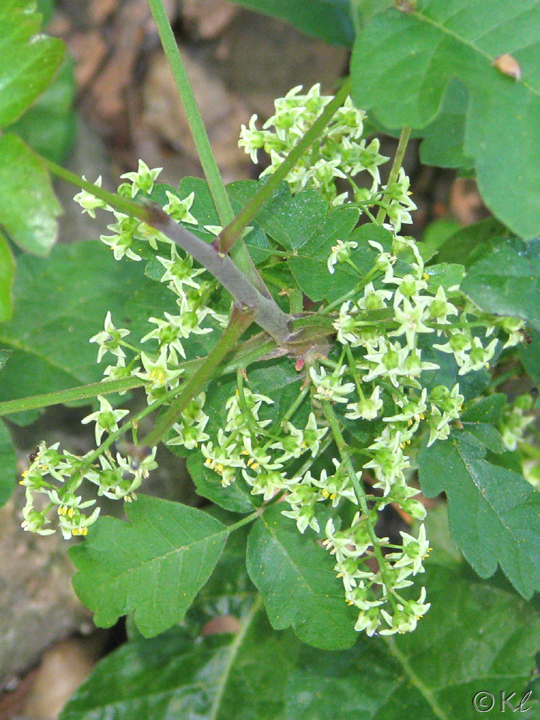

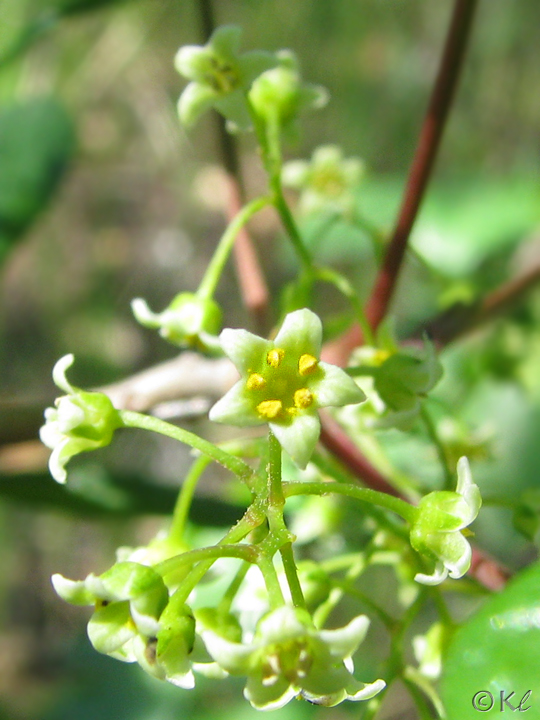


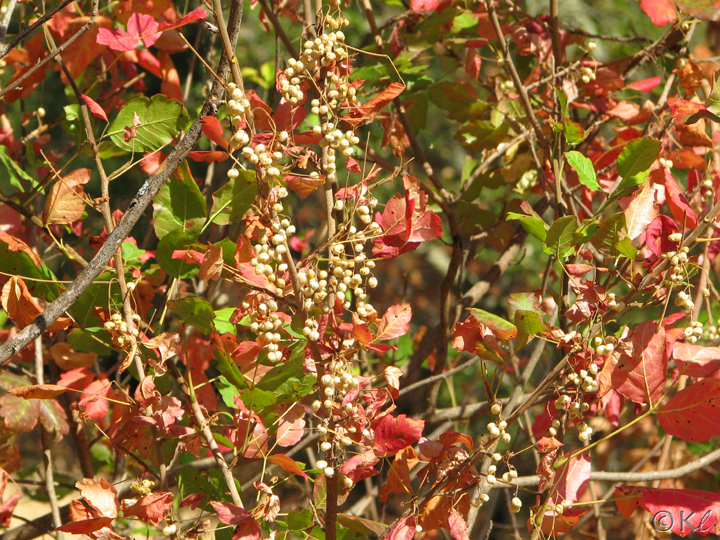

| This photo shows some of the densest bunches of berries I've seen on poison oak. |


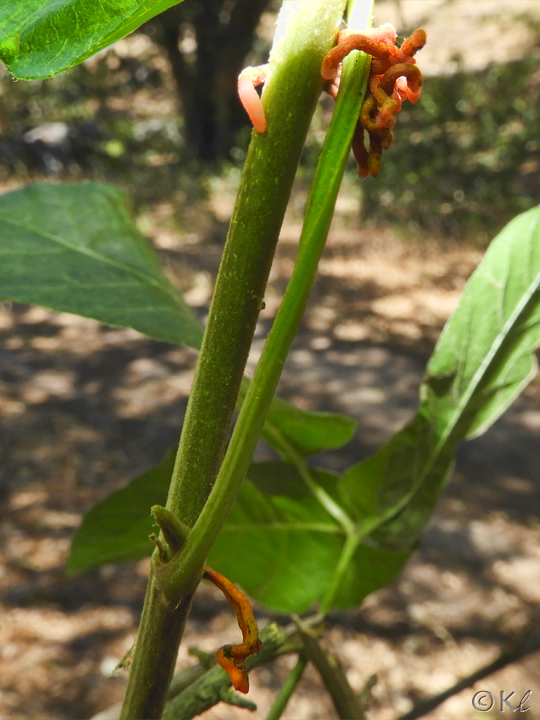
| Poison Oak has some very curious growths! I've only rarely seen them, and the first time I did (at another location in Fairfield), I thought they were a gall or witch's broom. What they really are is aerial roots! They are what helps the plant become a vine, attaching to a tree or whatever may be nearby. They start out very red, which is noticeable on the otherwise green plant. But caution: all plant parts are able to transfer urushiol with just the slightest touch. |
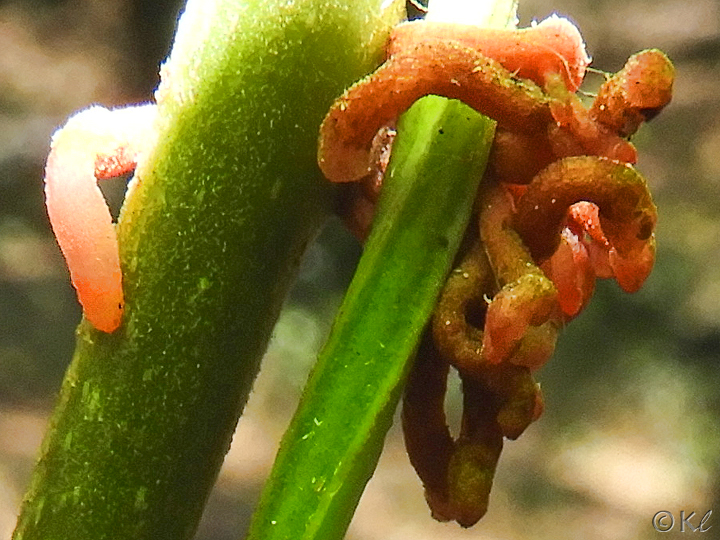

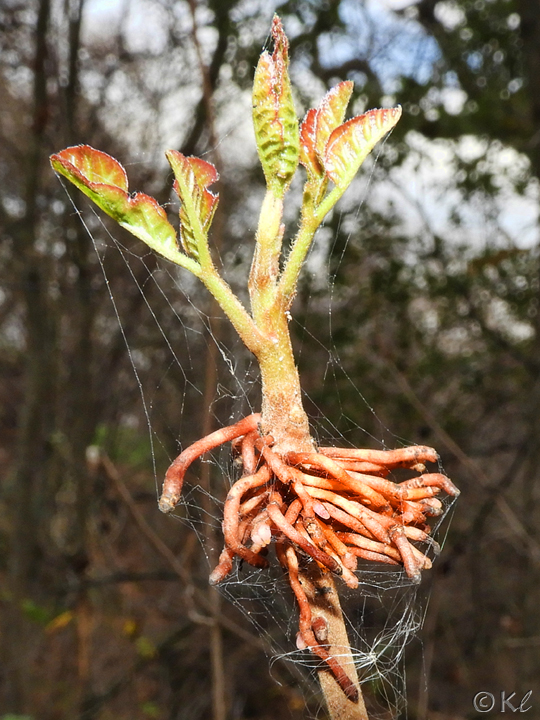
| This photo is from the first encounter I had with Poison Oak's aerial roots. Once you know they are roots, you can picture them underground, but it's strange to see them up in the air. |

| Poison Oak leaves are one of the first plants to have their leaves turn colors. Sometimes they start turning red by June. |

